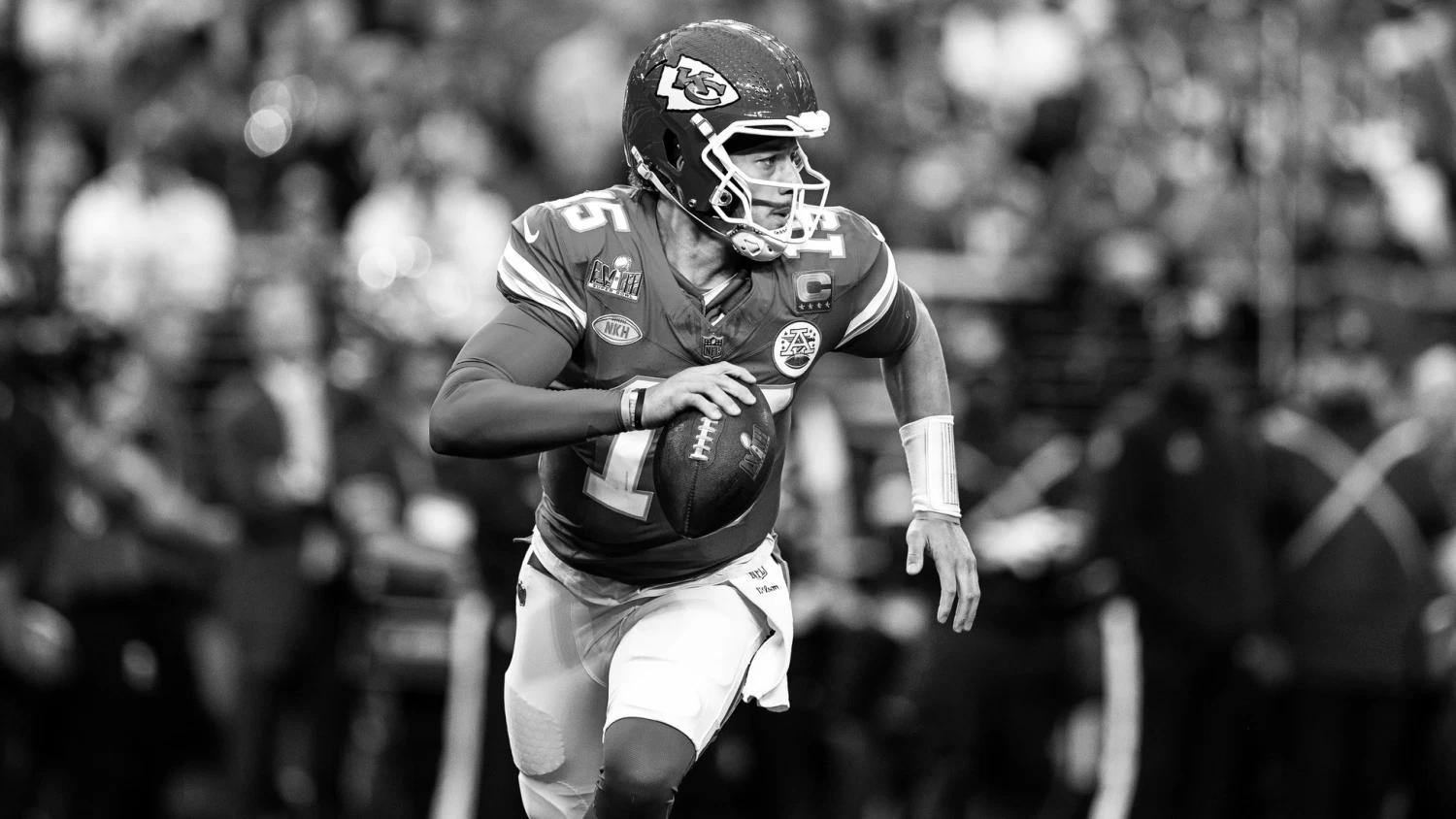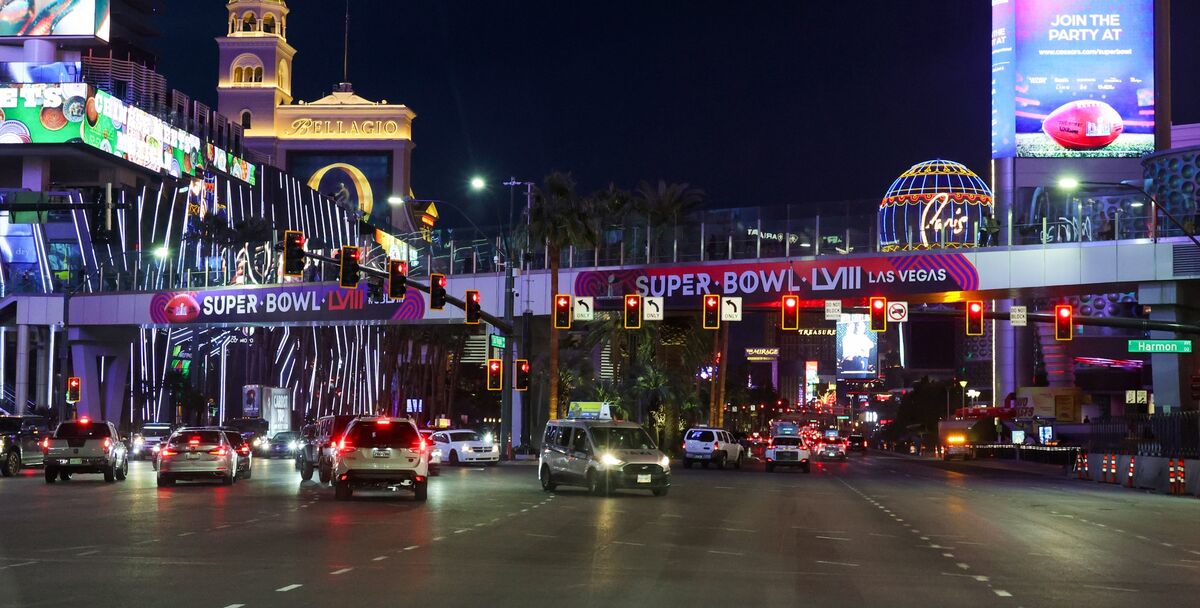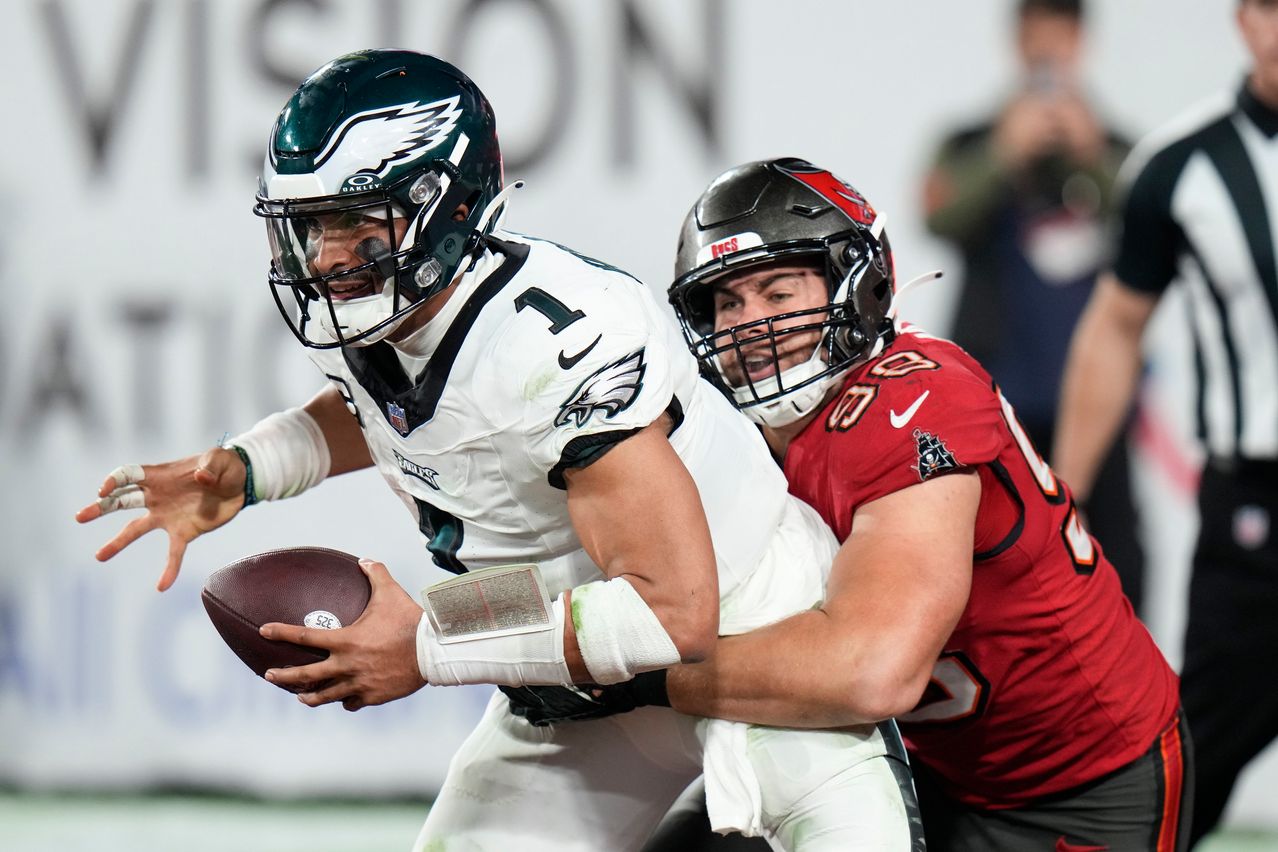This article is more than
6 year oldThe Eagles’ Super Bowl Upset Bid Begins With Fletcher Cox and a Deep Defensive Line
As the Patriots and Eagles take the field for Super Bowl LII, much of the focus for Philly fans will center on quarterback Nick Foles and whether or not he can recreate his NFC championship magic to lead his underdog squad to an upset victory. But the Eagles didn’t get to this point because of one good game from their Carson Wentz backup. They’ve been one of the league’s most balanced squads all year long, and with a defensive identity built around an opportunistic, explosive pass-rushing front, Philly’s got a shot to pull off a shocking Super Bowl win even if Foles reverts back to the check-down artist we saw in the team’s divisional-round win over the Falcons. Led by All-Pro defensive tackle Fletcher Cox, the Eagles boast the deepest pass-rush group in the NFL—and they’re set to do something few teams in the league can do: Bring relentless pressure for a full 60 minutes.
The oft-cited “blueprint” for beating Tom Brady and the Patriots, if there actually is one, is to achieve consistent pressure with just four pass rushers while dropping seven into coverage, sticking to opposing pass catchers like glue, and hoping the future Hall of Famer makes a mistake. It helps to get a miraculous catch or two along the way, of course, but that’s the gist of how the Giants beat the Patriots in both Super Bowls XLII and XLVI, and how the Broncos knocked New England out of the postseason back in 2015. Brady’s been, historically, just about unstoppable against teams that blitz, and while this season he wasn’t quite as sharp as he normally is against pressure packages of five or more rushers, he’s so quick at reading a defense and processing where his outlet option will be that sending an extra linebacker or safety in for a blitz is, in effect, simply gifting Brady one fewer defender to have to worry about downfield.
The Jaguars applied the four-man-pressure blueprint on Sunday, and it worked … for a while, anyway. Jacksonville’s fearsome front harassed Brady for most of the first two quarters—the 40-year-old signal-caller even started seeing ghosts in the pocket, sensing pressure that wasn’t there—and until late in the first half, it looked like the Jags had complete control of the game. But as my Ringer colleague Robert Mays pointed out, Jacksonville’s collection of pass-rushing talent may be excellent, but it lacks depth. As the game wore on, the Jags pass rush started showing signs of fatigue and Brady began to pick apart one of the league’s best defensive secondaries, erasing a 10-point fourth-quarter deficit.
The same thing happened in New England’s epic Super Bowl LI comeback last February: Early in the game, a super-fast Falcons defense controlled the action, flying around to break up passes and confound Brady, bringing heat off the edge and from the inside to help Atlanta race out to a huge lead. But after registering a 44.7 pressure rate over the first three quarters, the Falcons pass rush ran out of gas. There’s plenty of other reasons for their collapse, but Atlanta could muster only a 20.7 percent pressure rate in the fourth quarter and overtime—and that’s when Brady took over. It was the same story in Super Bowl XLIX: Seattle’s elite defense held Brady in check for three quarters as the Seahawks jumped out to a 10-point lead, but as the game went on (and after Cliff Avril suffered a concussion early in the second half), Seattle’s pass rush fell off the map. Facing sparse pressure late, Brady and the Pats scored 14 unanswered fourth-quarter points and (obviously with the help of an enormous Malcolm Butler interception in the final minute) won the game.
Against Brady and the Patriots, just about no lead is safe, and the ageless wonder has shown time and again he’s capable of outlasting even the best-conditioned teams to help his team claw its way back into games. But he faces a unique challenge against the Eagles front, a group whose edge is in the sheer number of effective pass rushers it can deploy throughout the course of a game. There’s just about no way to tire this unit out.
With Cox on the inside and Brandon Graham rushing off the edge, the Eagles feature one of the most unblockable pass-rushing duos in the league. But defensive coordinator Jim Schwartz’s pass-rush rotation is as deep as it is talented. A league-high seven guys registered 20-plus pressures on the year, with Cox (50 pressures, per Pro Football Focus) and Graham (60) bolstered by Chris Long (51), Vinny Curry (47), Derek Barnett (37), Timmy Jernigan (23), and Beau Allen (21). Schwartz keeps his defensive front fresh all game by constantly shuffling the lines—Cox has played a bunch of snaps the past few games, but Graham led the team’s defensive linemen in snaps this year (663), just 64 percent of Philadelphia’s defensive total. Fatigue becomes a real issue for opposing offensive linemen, who typically play every single snap when healthy; that freshness factor manifested into a league-high 40.8 pressure rate for the Eagles defense this year, per PFF, with 287 pressures, 19 more than the second-place Jaguars.
Cox is the straw that stirs the drink from the inside, and he’s probably the best interior lineman in the NFL not named Aaron Donald. He mixes a rare blend of first-step quickness to get up the field and into the pocket …
… with the power to play on the nose and bull-rush straight through opposing centers and guards.
But he’s not alone. Graham is incredibly athletic, bringing first-step burst and speed to close, whether he’s rushing from the edge:
Or from the inside:
When the Eagles line up Cox and Graham next to each other, it’s an offensive line’s worst nightmare.
But the Eagles can throw plenty of other guys at you. There’s Curry, who racked up three sacks, 17 quarterback hits, and 27 hurries. There’s Long, a 32-year-old former Patriot, who signed with the team for two years and $4.5 million back in March and notched five sacks on the year. And there’s Barnett, the team’s rookie first-round pick who grabbed another five sacks for his new team. All three registered impact plays in Sunday’s upset win over the Vikings: Long hit quarterback Case Keenum in the first quarter, altering his throw and leading to Patrick Robinson’s interception return touchdown; Barnett sacked Keenum in the second, forcing a fumble that the Eagles recovered; and Curry chased down Keenum in the fourth quarter, forcing Keenum to throw the ball away.
Those first two plays highlight just why the Eagles’ pass rush is such a key factor for the team heading into their Super Bowl matchup with the Patriots. Pressure gets quarterbacks out of rhythm and their offenses off schedule. It creates ever-important turnovers by getting the ball on the ground or forcing interceptions. Out of Philly’s 19 picks as a team this year, I charted eight that came as the direct result of pressure from the defensive line, whether that was a rushed throw or a quarterback that got hit as he released the pass.
Long, in particular, has been a fumble-forcing machine: He forced four cough-ups this season, tied for fourth among all players.
If Foles looks anything close to how he looked against the Vikings, it’ll go a long way toward helping the Eagles beat Brady and the Pats. But failing that, the Eagles’ best chance for pulling off the upset is to get after the four-time Super Bowl MVP early and often, force him off his spot, make him rush his throws, and put him on the ground. And they’re going to have to do it with their front four, bringing pressure from the guys lined up on the edge as well as the interior. As Cox put it on Sunday, “If we’ve got to blitz, we’ve got a problem.”
More than that, though, they’ve got to do what so many teams have failed to do over the past few years: keep the pressure on for all four quarters. “They’ve been there before,” said Cox. “And [against] those guys, you’ve got to play 60 minutes of football.” That’s where the Eagles’ pass-rush depth could make all the difference.
Next Up In NFL Playoffs
- Tony Romo on the Future of NFL Quarterback Play and Dynasty-Building in Sports
- Why the NFL Needs the New England Patriots
- NFL Championship Sunday Recap: The Eagles Are Underdogs in Name Only
- The Winners and Losers From the NFL’s Conference Championship Games
- Eagles Legend Nick Foles Dominated the Vikings
- Everything the Vikings Are Good at Failed Against the Eagles
Keywords
Newer articles
<p> </p> <p>New Caledonia’s international airport is closed and Australians are advised to exercise a high degree of caution, as protests turn deadly.</p>
Ellen to make TV comeback after two years
Will Zionism survive the war?
How the West's plan to punish Russian oil backfired
Putin's Preparing Better Than Us for a Long War
Putin’s choice of new defence minister shows he’s preparing for confrontation with the West
U.S. threats led to rupture of vital military ties, Nigerien leader says
Buffer or ruse?: Russia's new offensive in northeast Ukraine 'not an open road to Kharkiv'
How Michael Cohen went from Trump’s fixer to a key witness against him
Vladimir Putin will meet his big brother in Beijing




